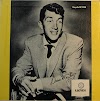 Before my Christmas wishes I wanted to say something short about a stupendous film I recently saw: it's a Cuban agit prop/art film The First Charge of Machete from 1969, directed by Manuel Octavio Gómez. It's a retelling of the Cuban rebellion against the Spanish in the 1860's, but the point in the film is how it's made: it's as if the style of the sixties' cinéma vérité style had been invented already in the mid-19th century and the movie was made as if the rebels, the Spanish officers and several people on the street were interviewed by the film crew, and there are lots of hand-held camera shots. The main point in the film, though, is that the film has been artificially rendered almost totally black-and-white, there are scenes in which the pictures have no grey areas anywhere. You could almost say: "Sin City, eat your heart out! These guys did it already!"
Before my Christmas wishes I wanted to say something short about a stupendous film I recently saw: it's a Cuban agit prop/art film The First Charge of Machete from 1969, directed by Manuel Octavio Gómez. It's a retelling of the Cuban rebellion against the Spanish in the 1860's, but the point in the film is how it's made: it's as if the style of the sixties' cinéma vérité style had been invented already in the mid-19th century and the movie was made as if the rebels, the Spanish officers and several people on the street were interviewed by the film crew, and there are lots of hand-held camera shots. The main point in the film, though, is that the film has been artificially rendered almost totally black-and-white, there are scenes in which the pictures have no grey areas anywhere. You could almost say: "Sin City, eat your heart out! These guys did it already!"Especially the battle scenes that have been shot with hand-held cameras are very, very striking. You could say: "Steven Spielberg, eat your heart out!" I mean, these guys did already 40 years ago what Spielberg tried to do with his Saving Private Ryan. There's also no sentimentality that jars the Spielberg film. The First Charge of Machete is also clearly a political film: there's no doubt it's about the Cuban revolution and also the Vietnam war, with the Spanish playing the role of the US, telling that they only want to bring peace and comfort to the Cuban people who've asked for their presence during these troubled times. The machete of the title refers to the only weapon the poor Cubans have. It's the fist of the proletariat, the film seems to be saying. (I wonder if Robert Rodriguez has seen this. I mean, doesn't his Machete have the same theme?)
The Cuban film meets of course quite a few problems, especially the question why the film has deteriorated so badly if the film as a medium existed already in the 1860s? If they have come to the same narrative conclusions as the original cinéma vérité directors of the 1950s and 1960s (Jean Roach, the Maysles brothers, D. A. Pennebaker etc.), why does the film look it's over hundred years old? It would mean that they made the first films already in the late 18th century, not late 19th century, as the case is now.
But this doesn't really marr the film's impact. The battle scenes are very, very exciting, one of the most exciting ever put on celluloid.
 Here's a longish quote from the book The Film as Subversive Art (thanks to Mies Mikkonen for the quote):
Here's a longish quote from the book The Film as Subversive Art (thanks to Mies Mikkonen for the quote):"Possibly the most "aesthetic" and "experimental" of revolutionary Cuba's films, this outstanding work utilizes high contrast photography, overexposure, and solarization to create the faded chiaroscuro and poetic authenticity of the period it depicts. The film deals with an 1870 uprising against the Spanish occupation troops in Cubam in which the machete originally used to cut sugar cane, becomes a weapon of people's warfare. The portrayals of decadent upper classes and heroic peasants are sharp and incisive, and distancing devices - such as the characters addressing the camera - are used the induce attitudes of analysis instead of involvement. The emergence of such a strongly poetic work within the Cuban film industry testifies to the divergent aesthetic tendencies permitted expression within the revolution."
eBay has a DVD on sale.



.jpg)

0 Yorumlar